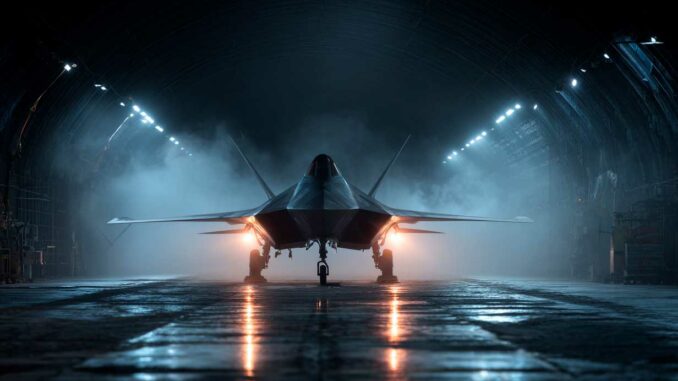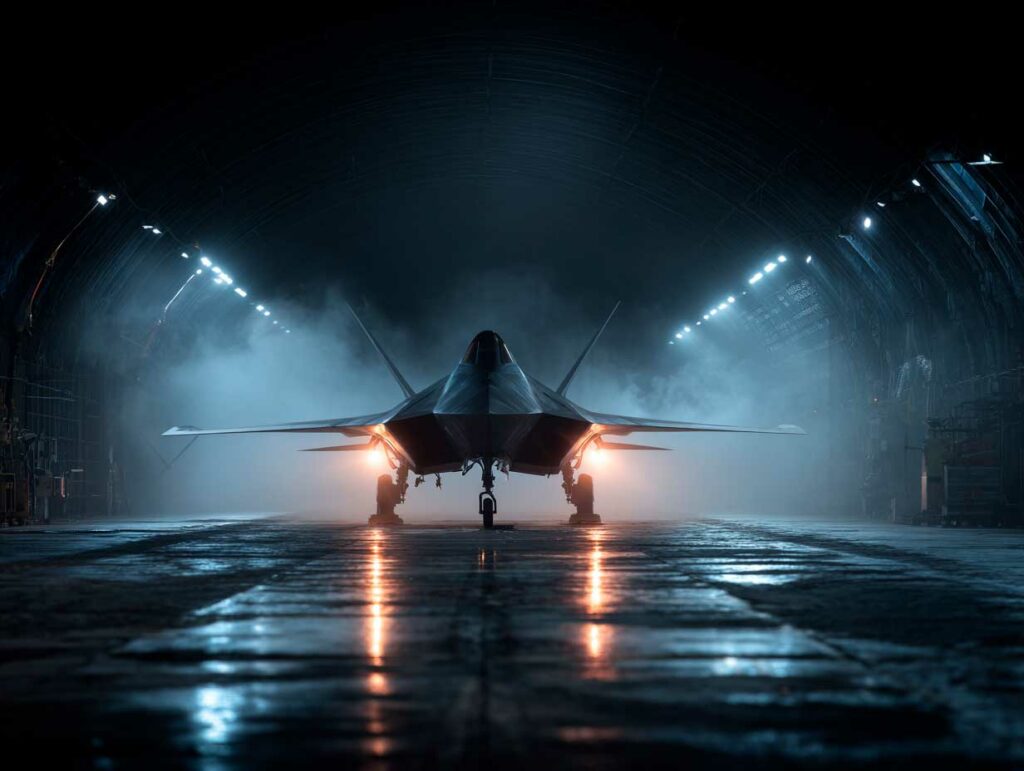
The NGAD promises to embody the sixth generation of fighter jets. Stealth, AI, adaptive propulsion: what innovations will surpass the F-22/F-35?
The NGAD program, designed as the replacement for the F-22 and F-35, embodies the US ambition to take a new lead in air superiority. Designated as the sixth generation of fighter jets, this project aims to combine advanced stealth, network connectivity, autonomy, and unprecedented strike power. The challenge: responding to emerging threats and increasingly contested environments. By the dawn of the 2030s, the NGAD’s technological innovations will need to transform military aviation. But is this massive investment worth it? This article examines the foundations of NGAD, the major innovations envisaged, the impact on US strategy, and the relevance of this ambitious transition.
The NGAD program and its foundations
The NGAD program was born out of studies initiated by DARPA in 2014 with the aim of preparing for the future of aviation after the F-22 Raptor. It is now focused on a “family of systems” where the NGAD fighter jet—the F-47 produced by Boeing—will be accompanied by “loyal wingman” drones or CCAs (Collaborative Combat Aircraft). This concept responds to the need for connected, autonomous and complementary support, redefining the very notion of air superiority in future conflicts.
Expected technological innovations
Advanced stealth and sensor fusion
The NGAD must exceed the standards of the F-35 thanks to advanced stealth combined with network connectivity. Data from radars, passive and active sensors, drones, and satellites will be fused in real time to provide the pilot with enhanced situational awareness.
AI, autonomy, and human-machine cooperation
The integration of NGAD autonomy and artificial intelligence is essential to the new doctrine. Autonomous CCAs will take on the riskiest missions, leaving tactical coordination to the F-47 pilot. This human-machine cooperation in the NGAD optimizes responsiveness and operational safety.
Adaptive propulsion and strategic range
The NGAD’s adaptive cycle engine is crucial. The XA102 (GE) and XA103 (Pratt & Whitney) engines offer energy flexibility by adjusting their operating cycle according to speed and mission phase. This innovation improves thermal stealth, range, and overall performance.
Modularity and operational flexibility
The modularity of the NGAD’s systems will allow configurations to be easily adapted to the theater of operations or technological developments. This modular approach facilitates upgrades without rebuilding the entire aircraft.
Armament and multi-domain warfare
The weapons of the future NGAD aircraft will include very long-range missiles, onboard cyber offensive capabilities, and probably the use of directed energy weapons. The F-47 cockpit will likely feature virtual controls and 360° displays using augmented reality, reinforcing sixth-generation air superiority.

Analysis of strategic relevance
Superiority is essential… but at what cost?
The NGAD program is based on huge investments, with several billion already allocated to research and development and an initial contract estimated at $20 billion for Boeing. The question arises: does this aircraft justify such a budget over decades? For strategists, it is a guarantee of maintaining superiority against a China whose capabilities are rapidly increasing.
Towards a multidimensional strategy
The NGAD system is not limited to an aircraft. It is a NGAD fighter jet of the future integrated into a broader system comprising drones, AI, space sensors, and cyber capabilities, transforming the US operational architecture into a truly multi-domain force.
Challenges ahead
The NGAD program faces several structural obstacles. The first concerns time and cost. The US Air Force is considering an approach inspired by the “Digital Century Series”, which involves accelerating the development cycle through digital modeling and virtual testing. While this method reduces lead times, it requires massive investments in digital engineering and remains exposed to budget inflation that is difficult to contain. The aim is to avoid the cost overruns seen with the F-35, whose unit and maintenance costs have skyrocketed.
A second challenge lies in the strategic pause decided in 2024. The USAF has reexamined the need for a manned fighter in light of the rapid progress of Collaborative Combat Aircraft (CCAs). This reflection raises a central question: should efforts be focused on a sixth-generation aircraft, or should more be invested in autonomous drones capable of operating in swarms?
Finally, geopolitical pressure remains a decisive factor. Demonstrations of Chinese stealth prototypes are a reminder that technological competition requires the NGAD program to continue despite hesitations. The United States must therefore strike a delicate balance between technological ambition, economic viability, and maintaining sixth-generation air supremacy.
Impact on US strategy
The NGAD marks a strategic break. It embodies:
- a response to the challenges of access and control of contested areas (A2/AD zone),
- support for the B-21 bomber as an escort and support aircraft,
- a redefinition of the role of manned aircraft through the system concept,
- a demonstration of technological leadership, which is key to the US deterrence posture.
The NGAD, as the NGAD program and sixth generation of fighter aircraft, embodies a revolution: stealth, connectivity, AI, adaptive propulsion, modularity, and futuristic weaponry. If these innovations live up to expectations, they will provide sustainable air supremacy. However, deployment will require financial control, strategic timing, and technology alignment—challenges that match the ambition.
War Wings Daily is an independant magazine.